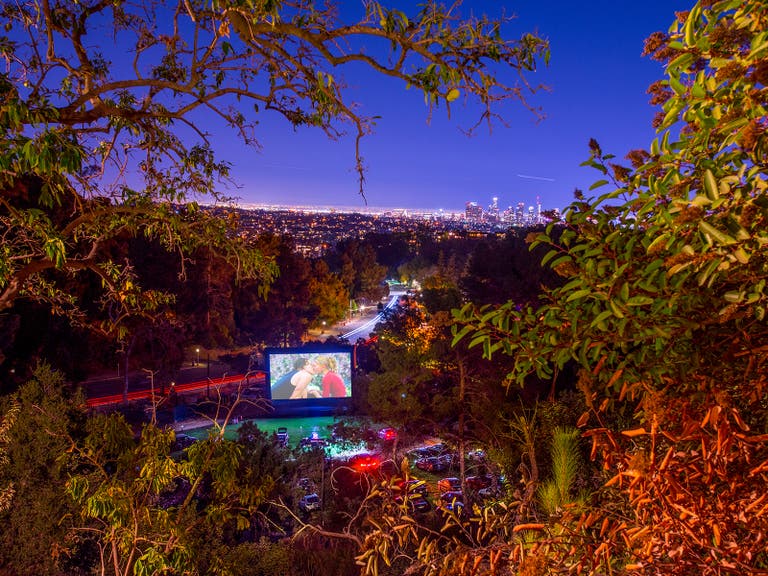Celebrate Aviation History in Los Angeles
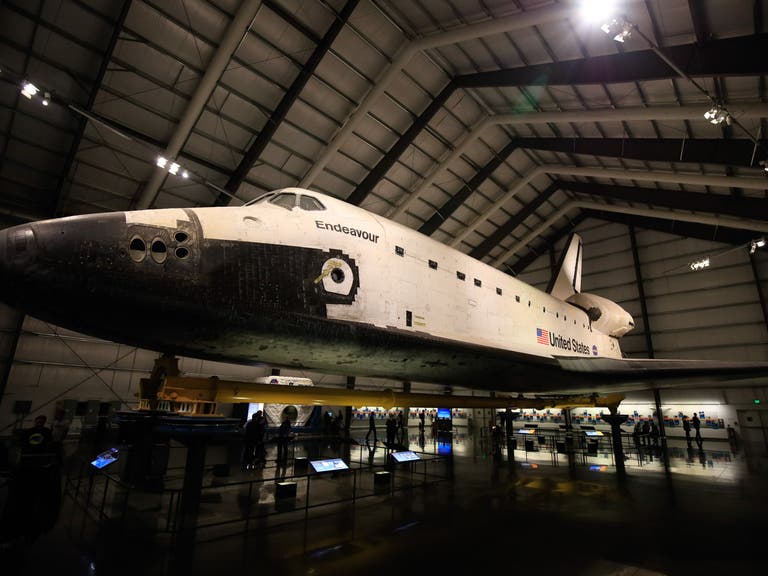
Space Shuttle "Endeavour"
| Photo: Yuri Hasegawa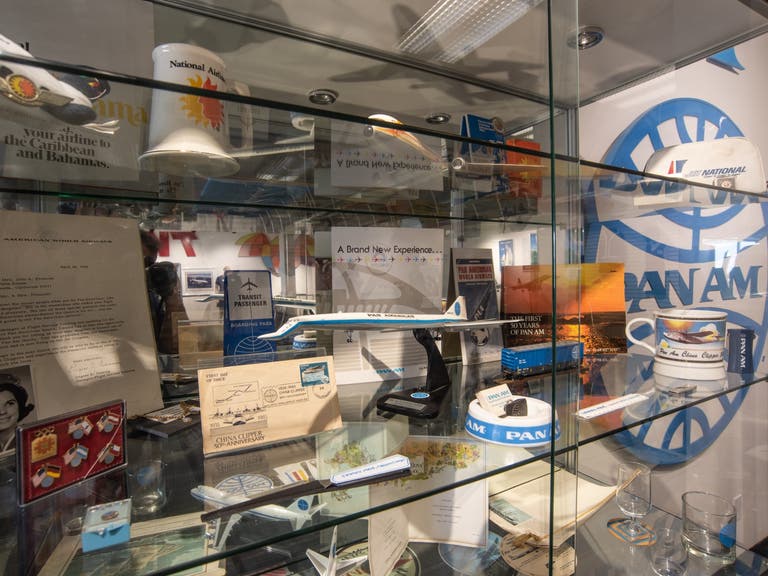
Commercial Aviation History exhibit | Photo: Flight Path Museum
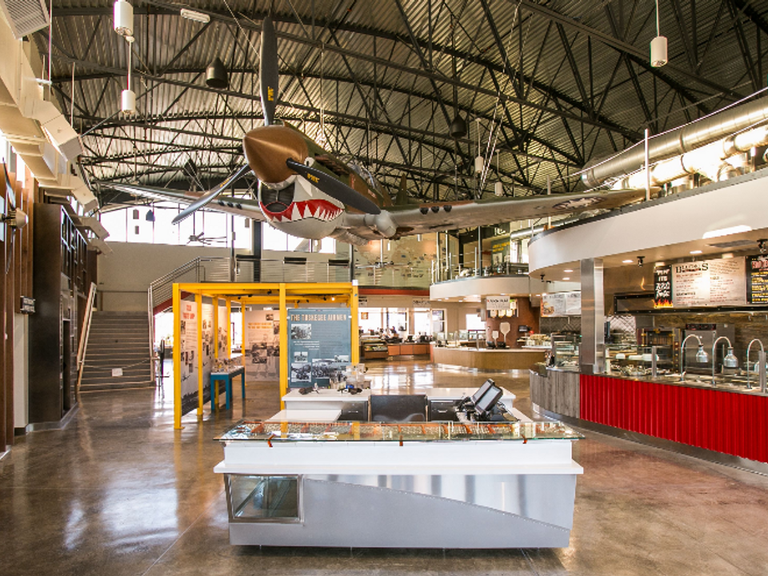
Food Bazaar and P-40 Flying Tiger | Photo: The Proud Bird
On Dec. 17, 1903, Orville and Wilbur Wright made the first successful flight of a self-propelled, heavier-than-air aircraft. The flight only lasted 12 seconds and a distance of 120 feet, but it was enough to change the course of history. Los Angeles has a historic and important role in aviation and aerospace, which visitors can explore at various cultural attractions throughout the city.
Los Angeles International Airport (LAX) is the main airport serving the Greater Los Angeles area. The world's fifth busiest airport, LAX welcomes tens of millions of travelers every year from across the country and around the globe, in particular our friends from the Pacific Rim. LAX is in the midst of a $15-billion capital improvement program that will touch on all nine passenger terminals and build new facilities, including an Automated People Mover (APM) train, Consolidated Rent-A-Car (ConRAC) facility and the West Gates at Tom Bradley International Terminal.
Located in the San Fernando Valley, Van Nuys Airport (VNY) is the world's busiest general aviation airport, handling more than 1,200 operations every day with just two parallel runways. Because of its convenience and privacy, VNY is frequently used by celebrities, politicians, and executives. Many local TV news helicopters fly out of Van Nuys Airport, as well as the L.A. Fire Department’s Air Operations Unit. VNY also offers convenient FlyAway Bus service to LAX. Generations of movie fans recognize Van Nuys Airport from an opening scene in Casablanca. The 2009 documentary, One Six Right traces the history of VNY.

Flight Path Museum & Learning Center
The Flight Path Museum & Learning Center is located in the LAX Imperial Terminal, on the south side of the airport. The facility opened in 2003 to coincide with the 75th anniversary of LAX and the 100th anniversary of the first powered flight by the Wright Brothers. Exhibits include Commercial Aviation History, Flight Crew Uniforms, Flying Tigers, Space Exploration, DC-3 Plane and Fire Fighting Vehicle. The Flight Path Simulator Training Program encourages students to pursue further education and careers in aviation. Aviation scholars should set aside time for the William A. Schoneberger Research Library, which houses one of SoCal's premier collections of aviation and aerospace books, technical manuals and related publications.
The Flight Path Learning Center & Museum is open on Friday and Saturday from noon to 4pm. Timed tickets for one-hour self-guided tours are $5 for Adults; and $3 for Child, Senior (60+), Military (Active/Veteran) or LAX Badged.
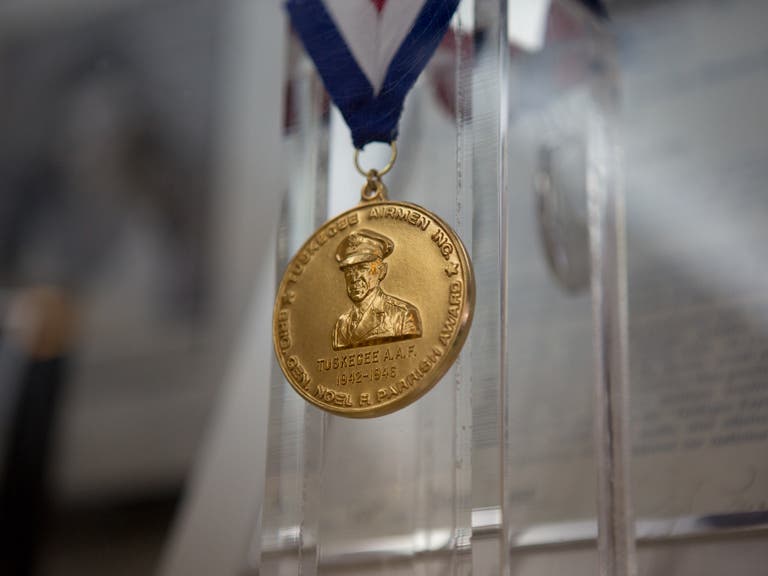
Tomorrow's Aeronautical Museum
Tomorrow’s Aeronautical Museum (TAM) is a living classroom that brings aviation history to life and empowers the dreams of underprivileged youth to literally take flight. Located in South Los Angeles, TAM features interactive exhibits that explore racial diversity in the evolution of modern flight, as well as a Sky Lab computer center, Tuskegee Airmen Learning Center, and operating and static display aircraft. TAM’s nonprofit flight academy and afterschool programs provide STEM (science, technology, engineering and math) instruction and compelling alternatives to drugs, gangs and violence.
Find out more about TAM's founder, Robin Petgrave.

The Proud Bird
Boasting panoramic views of LAX’s approach runways, The Proud Bird features a Food Bazaar with the famed Bludso's BBQ and global culinary options including American, Asian and Italian cuisines. The Mile-High Club Bar & Lounge offers aviation-themed cocktails on tap and the ReLAX Happy Hour for travelers - just show your boarding pass and enjoy drink specials all day.
The Proud Bird was originally opened in 1967 by David Tallichet, a World War II bomber pilot who founded Specialty Restaurants Corporation, which operates Castaway in Burbank, Odyssey in Granada Hills, Whiskey Red's in Marina del Rey and more.
Today the Proud Bird continues Tallichet's vision of a destination restaurant/event venue that celebrates the history of aviation: guests are greeted by a suspended P-40 Flying Tiger replica at the entrance; exhibits are devoted to the Tuskegee Airmen, Aztec Eagles, and Women Aviators; WWII aircraft are on view in the Outdoor Airplane Park. Free docent tours are available.

California Science Center
Located at historic Exposition Park in Downtown L.A., the California Science Center features air and space exhibits that follow aviation history from its origins to the exploration of “the final frontier.” Displays at the museum include a replica of the 1902 Wright Glider, an A-12 Blackbird spy plane, and a trio of NASA space capsules. Your journey through the history of flight culminates with the Space Shuttle Endeavour, on public display in the Samuel Oschin Pavilion.

Columbia Memorial Space Center
An official partner organization of NASA, the Columbia Memorial Space Center (CMSC) opened in October 2009. The 20,000 square-foot museum is located on the site of the former Boeing plant (previously North American Rockwell / North American Aviation) where all of the Apollo Command and Service Modules were built and the Space Shuttle was conceived.
The two-story building features a Robotics Lab, High Definition Computer Lab, and a wide range of interactive exhibits that educate visitors about Space Shuttle operations, living and working on the International Space Station, exploration of our solar system, aerospace engineering, and the range of fields of study and jobs related to human and robotic space exploration.

Museum of Flying
Located on the south side of Santa Monica Airport, the Museum of Flying features 22,000 square feet of exhibits that trace the history of flight as well as Southern California’s aviation and aerospace industries. Visitors usually begin their experience in the Early Aviation Hangar Bay, where the star attraction is a Wright Flyer replica that was featured in the Ben Stiller movie, Night at the Museum: Battle of the Smithsonian. Most of the museum’s aircraft are located in the Aircraft Display Gallery, which features a rotating exhibit of aircraft on the floor as well as suspended above. For the young pilots in the family, hands-on experiences include open cockpits in a Convair 240 nose section, a static cockpit trainer for a Lockheed T-33 aircraft, and pilot/co-pilot seats in a FedEx Boeing 727.
The Museum of Flying is open Thursday-Sunday from 10am to 4pm. Admission is $10 for Adults, $8 for Seniors/Students, and $6 for Children ages 3-12. Children 2 or younger are free.
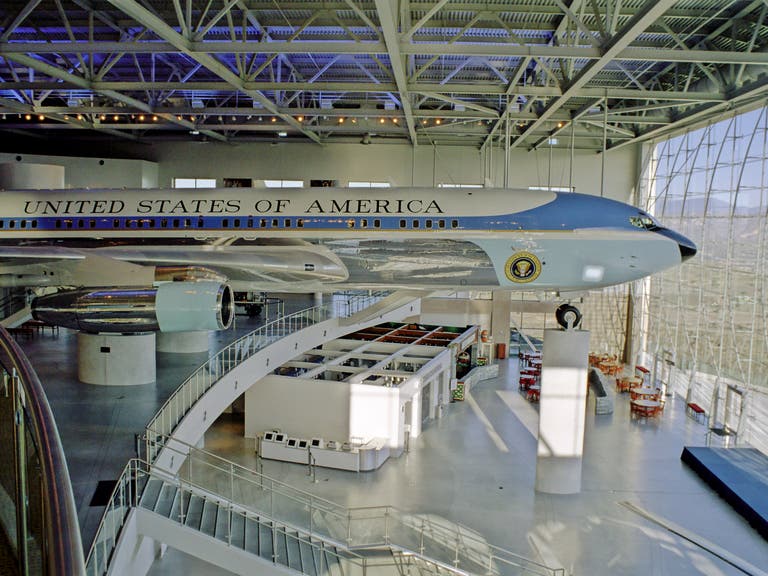
Air Force One - Reagan Library
The Ronald Reagan Presidential Library & Museum offers spectacular views from its hilltop location in Simi Valley. The Reagan Library is one of L.A.’s most unique cultural attractions, featuring exhibits, a replica of the Oval Office, a section of the Berlin Wall, and much more.
Inside the Air Force One Pavilion, you can step aboard the same aircraft that flew President Reagan over 660,000 miles – 26 foreign countries and 46 U.S.states. The “Flying White House,” tail number 27000, served seven U.S Presidents from 1973 to 2001, including Presidents Nixon, Carter, Ford, Reagan, George H.W. Bush, Clinton and George W. Bush. From Air Force One, President Reagan hand-wrote many of his speeches, signed important legislation, and even officially started a NASCAR race via phone. The pavilion also features a 120-foot mural that represents all 22 aircraft that have ever flown a U.S. president, and an actual Marine One helicopter that flew President Johnson.
